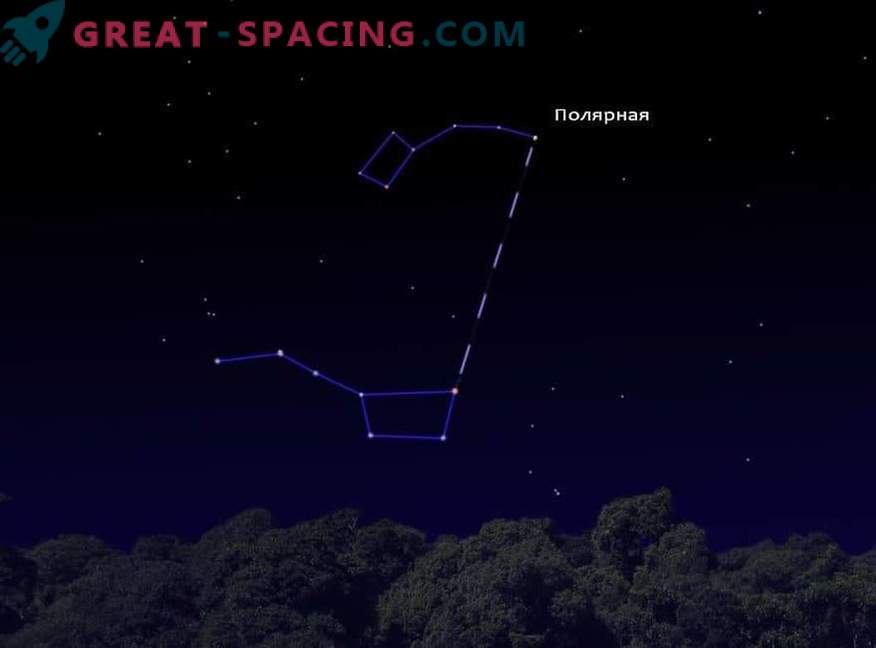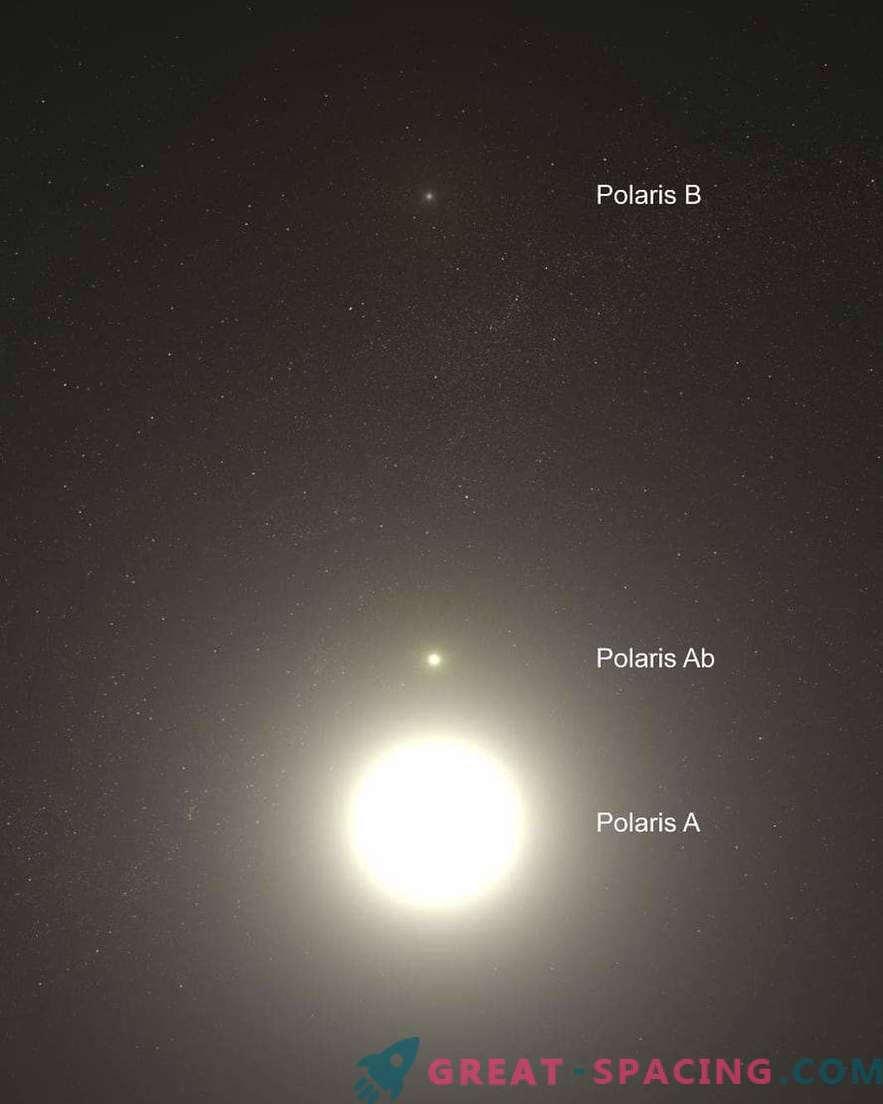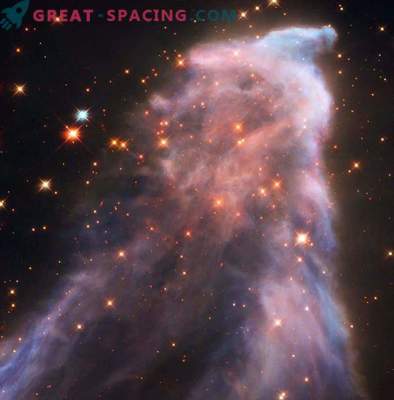
A polar star is considered almost the most famous star object in the Universe for earthlings. Although not everyone knows that this is not a real name, and it is not the first to become “polar”.
Space Navigator

To find the Polaris, draw a line from Merak to Dubh, and then take 5 of the same segments. In the frame: Dubhe, Merak, Fedha, Megrets, Aliot, Mizar, Alkaid and the Polar Star
Most often known as a sea guide, which since ancient times indicates to travelers to the north. Why? The secret is that it is considered to be the closest to the North Pole of the world. This is a static point around which stellar celestial bodies perform visible rotation (axial rotation of the Earth).
More precisely, it is Alpha Ursa Minor, living in the same constellation with distance from us in 447 light years. It is interesting that the guiding star, in fact, is represented by three objects with a supergiant. All of them are distant from the pole just under 1 degree.
This allows you to still use the star for navigation purposes. The fact is that it practically does not move for the earth observer during axial rotation, and its directionality almost exactly converges with an indication of north. However, this was not always the case.
Temporary position

Enlarged view of the Polar Star system
In fact, “polarity” is a kind of temporary position, although it lasts much longer than human life. Our planet passes through the lunar-solar precession (the points of the spring and autumn equinoxes are shifting). This is not fatal, but it leads to the fact that for each century there is a shift of the axial point of the planet in a circle by 1.397 degrees.
That is, at various intervals the title of “polarity” moves to the star that is closer to the North Pole of the world.
For example, if we lived 13000 years ago, then we had to use the star Vega (Alpha Lira), located 25.3 light years away. Between 3500-1500 BC er position held Tuban in the constellation of the Dragon at a distance of 310 light years.
The modern Polar Star holds the reins of the navigation board from 1100 to 3200. Who is next?
Which star will be next in “polarity”?

A polar star is actually represented by a whole family of three stars.
At a distance of 45 light years the future navigator lives - Alraya (Gamma Cephei). This is a double star with an exoplanet. She will be a new landmark until the year 5000. Interestingly, in the year 13000 Vega will again become “polar”. We can still focus on the familiar star. By the way, it is easy to find. You need to find Big Bucket (asterism is a recognizable pattern), walk along the other side of the handle (two star objects) and draw a line to the North Star. Or simply look for the last star in the Minor Bucket (the constellation Ursa Minor).
Postscript
It seems to many that the North Star is the brightest. But she stands only on 46 place, yielding to Sirius and Arcturus. Due to the abundance of artificial light, it is increasingly difficult to find. Therefore, if you live in a large city, you could never see a guiding star.











































